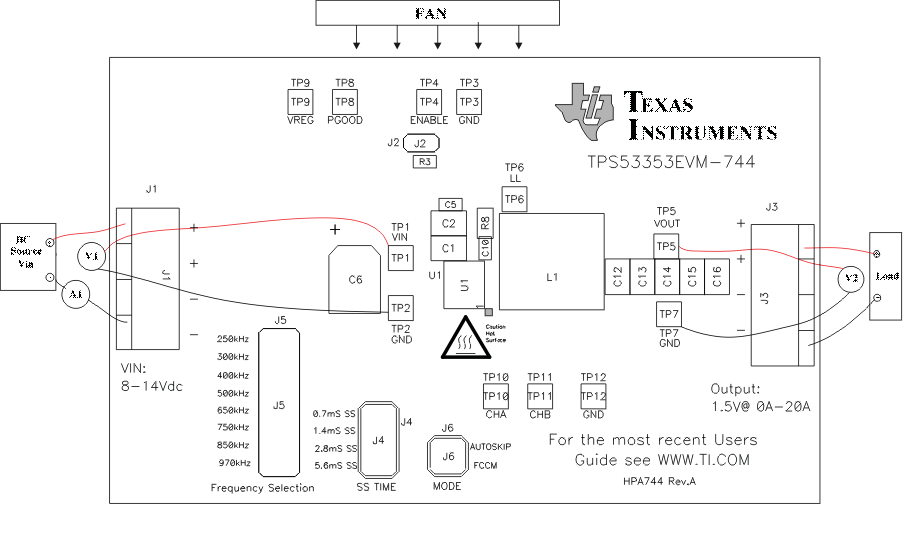SLUU521A August 2011 – November 2021 TPS53353
- Trademarks
- 1 Description
- 2 Electrical Performance Specifications
- 3 Schematic
- 4 Test Setup
- 5 Configurations
- 6 Test Procedure
-
7 Performance Data and Typical Characteristic Curves
- 7.1 Efficiency
- 7.2 Load Regulation
- 7.3 Load Regulation
- 7.4 Enable Turn-On/ Turn-Off
- 7.5 Output Ripple
- 7.6 Switching Node
- 7.7 Output Transient With Auto-Skip Mode
- 7.8 Output Transient With FCCM Mode
- 7.9 Output 0.75-V Prebias Turn-On
- 7.10 Output Overcurrent and Short-Circuit Protection
- 7.11 Bode Plot
- 7.12 Thermal Image
- 8 EVM Assembly Drawing and PCB Layout
- 9 Bill of Materials
- 10Revision History
4.2 Recommended Test Setup
 Figure 4-2 TPS53353EVM-744 Recommended Test Setup
Figure 4-2 TPS53353EVM-744 Recommended Test SetupFigure 4-2 is the recommended test setup to evaluate the TPS53353EVM-744. Working at an ESD workstation, make sure that any wrist straps, bootstraps or mats are connected referencing the user to earth ground before power is applied to the EVM.
Input Connections:
- Before connecting the DC input source VIN, it is advisable to limit the source current from VIN to 10-A maximum. Ensure that VIN is initially set to 0 V and connected as shown in Figure 4-2.
- Connect a voltmeter V1 at TP1 (VIN) and TP2 (GND) to measure the input voltage.
- Connect a current meter A1 to measure the input current.
Output Connections:
- Connect the load to J3, and set the load to constant resistance mode to sink 0 A before VIN is applied.
- Connect a voltmeter V2 at TP5 (VOUT) and TP7 (GND) to measure the output voltage.
Other Connections:
Place a fan as shown in Figure 4-2, and turn it on, ensuring that air is flowing across the EVM.